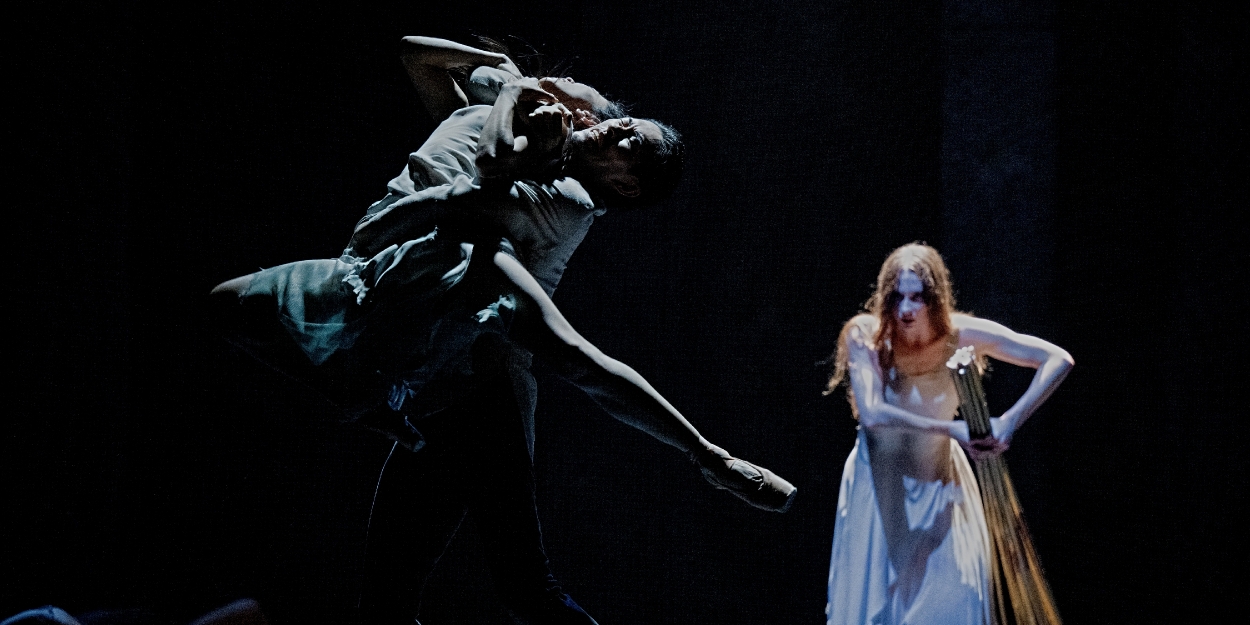Review: AKRAM KHAN'S GISELLE, Sadler's Wells
Pin back those ears and open your heart.

![]() Whatever you do, don’t ignore the signs. The posters outside the auditorium alerting audiences to the “very loud music” are not being overly cautious. Quite the opposite. With its ear-splitting drums and a rumbling bass that rolls across the room juddering through our bodies, this Giselle’s effect relies as much on sound as the dancing.
Whatever you do, don’t ignore the signs. The posters outside the auditorium alerting audiences to the “very loud music” are not being overly cautious. Quite the opposite. With its ear-splitting drums and a rumbling bass that rolls across the room juddering through our bodies, this Giselle’s effect relies as much on sound as the dancing.
Akram Khan’s first full-length ballet is a stirring work in more ways than one. This modern update to the bleak 19th-century work comes back to London after five years sandwiched between a pair of very different interpretations: the queer and BDSM overtones of cabaret artist Jack Sears and Royal Ballet soloist Hannah Grennell Giselle: Remix from earlier this year are in stark contrast to the more traditional Mary Skeaping take coming to the Coliseum in January.
This bravura version for the English National Ballet drives a middle path between those two. It returns to Sadler’s Wells after five years away and sold-out runs around the world. Khan has kept the strong bones and grim tones of the original while evoking modern evils like immigrant sweatshops and the ever-widening gap between society’s haves and have-nots. The sense of divide is physically present throughout in the form of Tim Yip’s immense grey wall which at times rotates along its horizontal axis.
We first meet our heroine with her fellow factory workers (the Outcasts) pushing into the wall, their wet hands pressed into the unforgiving barrier. Looking on is another Outcast Hilarion and the upper-class Albrecht who is there in disguise; both are in love with Giselle. It’s not long before the two men come to blows with tragic consequences for all three.
The mad, pounding first act is a tour de force of sound, movement and vision. When James Streeter’s Albrecht sees Giselle (real-life partner Erina Takahashi), there’s a genuine frisson which carries through to the bitter end. Khan makes the distinction between the Outcasts and their “superiors” chillingly clear through some sublime interactions, the contrast in clothing and powerful direction. In one of the night’s outstanding scenes, the wall flips up as Albrecht’s peers arrive dressed by Yip in outfits that wouldn’t look out of place on a Paris runway. The group’s imperious nature pervades the stage even before Bathilde claps eyes on her errant fiance. Seeing these upper class villains pull the lovers apart, instigate the fight between Albrecht and Hilarion and have the Outcasts dance for their pleasure emanates a darkly emotional undertone. When Giselle’s death comes, it does so without fanfare, surrounded as she is by her own peers.
The second act is a total tonal switch. From boom-boom music, we have the looming Wilis, beings of the afterlife who welcome Giselle to their number. Khan retains the traditional en pointe focus here, a technique which makes these tall, slim dancers look even taller and slimmer. As their queen, Emma Hawes’ Myrtha elegantly marshalls her subjects with a stern will but fails to prevent Giselle returning for one last dance with Albrecht. This entire second act has a more ethereal and solemn feel aided by a delicate score from Lamagna, orchestrated by Gavin Sutherland. The pathos is made palpable from every which way, not least the solemn melodies and the crepuscular lighting.
Khan’s Giselle loses narrative cohesion at points, especially soon after we are introduced to the Wilis. The sonic charge of the first act isn’t matched by what we hear in the second. This may not be for the purists who yearn for a more classical experience but he has created a work which resonates with the times. Streeter and Takahashi are an effusive pairing, their emotional final scene an utter tear-jerker.
Akram Khan’s Giselle continues until 28 September.
Photo credit: Camilla Greenwell
Reader Reviews

Videos

